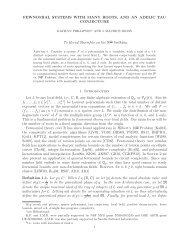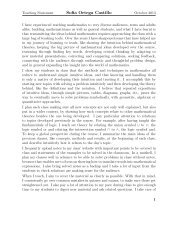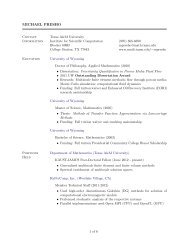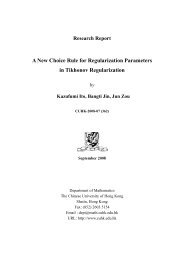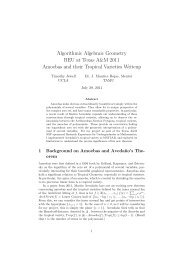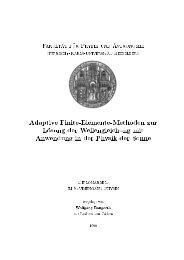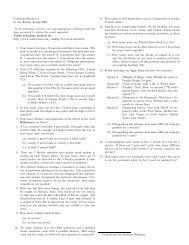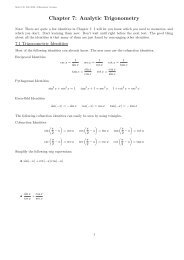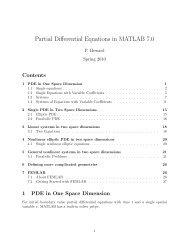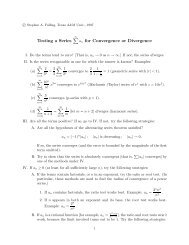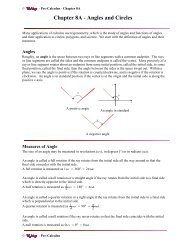Tensors: Geometry and Applications J.M. Landsberg - Texas A&M ...
Tensors: Geometry and Applications J.M. Landsberg - Texas A&M ...
Tensors: Geometry and Applications J.M. Landsberg - Texas A&M ...
You also want an ePaper? Increase the reach of your titles
YUMPU automatically turns print PDFs into web optimized ePapers that Google loves.
12 1. Introduction<br />
Figure 1.3.1. temporary picture until get party<br />
tryptophan, phenylalanine <strong>and</strong> DOPA. Each sample, say sample number i, is<br />
successively excited by light at J different wavelengths. For every excitation<br />
wavelength one measures the emitted spectrum. Say the intensity of the<br />
fluorescent light emitted is measured at K different wavelengths. Hence for<br />
every i, one obtains a J × K table of excitation-emission matrices.<br />
Thus the data one is h<strong>and</strong>ed is an I × J × K array. In bases, if {ei}<br />
is a basis of C I , {hj} a basis of C J , <strong>and</strong> {gk} a basis of C K , then T =<br />
�<br />
ijk Tijkei⊗hj⊗gk. A first goal is to determine r such that<br />
T ≃<br />
r�<br />
af⊗bf⊗cf<br />
f=1<br />
where each f represents a substance. Writing af = � ai,fei, then ai,f is<br />
the concentration of the f-th substance in the i-th sample, <strong>and</strong> similarly<br />
using the given bases of R J <strong>and</strong> R K , ck,f is the fraction of photons the f-th<br />
substance emits at wavelength k, <strong>and</strong> bj,f is the intensity of the incident<br />
light at excitation wavelength j multiplied by the absorption at wavelength<br />
j.<br />
There will be noise in the data, so T will actually be of generic rank, but<br />
there will be a very low rank tensor ˜ T that closely approximates it. (For all<br />
complex spaces of tensors, there is a rank that occurs with probability one<br />
which is called the generic rank, see Definition 3.1.4.2.) There is no metric<br />
naturally associated to the data, so the meaning of “approximation” is not<br />
clear. In [1], one proceeds as follows to find r. First of all, r is assumed to<br />
be very small (at most 7 in their exposition). Then for each r0, 1 ≤ r0 ≤ 7,<br />
one assumes r0 = r <strong>and</strong> applies a numerical algorithm that attempts to<br />
find the r0 components (i.e. rank one tensors) that ˜ T would be the sum<br />
of. The values of r0 for which the algorithm does not converge quickly are<br />
thrown out. (The authors remark that this procedure is not mathematically<br />
justified, but seems to work well in practice. In the example, these discarded<br />
values of r0 are too large.) Then, for the remaining values of r0, one looks<br />
at the resulting tensors to see if they are reasonable physically. This enables



